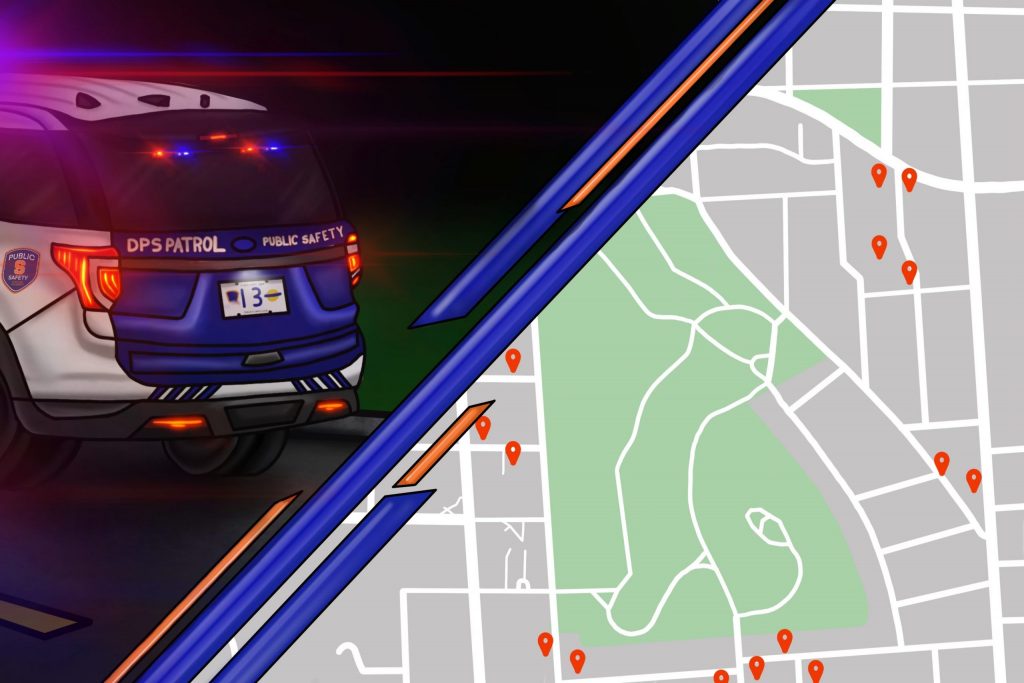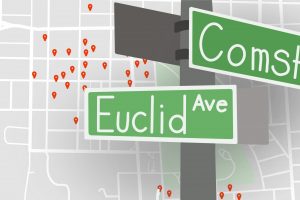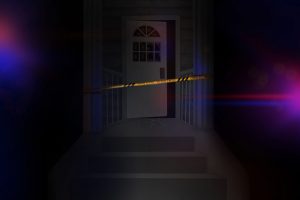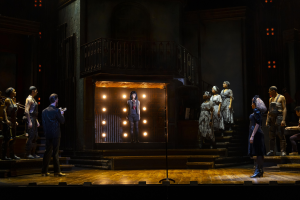Recent increase in off-campus crime prompts concern from students, law enforcement
Recent trends in off-campus crime show a change of traditional patterns

Crimes being committed around Syracuse University within the surrounding neighborhoods is not a new concept. Students deciding to live off-campus have always faced the potential of confronting crime outside of the university bubble. However, both students and law enforcement alike are now beginning to see a shift in these traditional crime trends.
Crime within university neighborhoods has been notably high since the spring 2022 semester, with the Syracuse University Department of Public Safety sending out reminders to students with tips on how to stay safe amid this rise in crime. Syracuse Police Chief Joe Cecile announced in a briefing on September 8 that burglaries were up by 48% now compared to this same time last year, particularly near the SU and Le Moyne College campuses.
These changes in crime patterns have impacted what types of crime are most prevalent, when crime is occurring, who’s committing these crimes and where they are taking place. An exact cause has yet to be determined. Some may speculate the pandemic could have been an influence but there’s no clear sign yet as to why crime is changing around SU.
Comparing the Off-Campus Crime Data
According to data provided by the Department of Public Safety’s crime log, there have been 74 incidents of burglary, larceny, property damage, robbery, vehicle theft and trespassing in Aug. 2021 to March 2022 in off-campus student residences alone. This figure is higher compared to the same period in 2020 to 2021, which had 46 instances of those types of crimes.
Overall, the most common types of crimes affecting off-campus neighborhoods are burglary and larceny. While burglary, larceny and robbery are sometimes used interchangeably in conversation, the three terms actually refer to different types of crimes. Burglary is the unlawful entry into a property with the intent to commit a crime, especially but not exclusively theft. Larceny involves the theft of someone’s personal property, regardless of whether or not the owner is present. Robbery is theft using intimidation or force.
While DPS and the Syracuse Police Department commonly collaborate when responding to crimes committed in the neighborhoods surrounding campus, SPD ultimately has overarching jurisdiction off-campus. Since not all of the off-campus crimes are processed and logged through the DPS system but rather SPD, the actual rates of off-campus crime are likely higher than the figures reflected in the DPS crime log. There are also instances where students do not report a crime at all.
Off-Campus Crime Hot Spots
Natalie Kravitz, a senior studying geography with a concentration in geographic information systems, originally researched and created heat maps to examine the frequency of off-campus crimes in student housing as part of a course project. By using data collected from the DPS daily crime logs for the past two school years, Kravitz recreated these depictions in two maps, both visually highlighting the crime “hot spots.”
As shown in the map, most of the incidents are concentrated near University Hill to the north of campus, University Neighborhood to the east of campus and South Campus.
In terms of the variety of crimes occurring in different areas, Sardino said he noticed more burglaries occurring in the University Neighborhood area compared to University Hill.
“The people that are committing these crimes will move to the place where the opportunity exists. And right now, it is in that East neighborhood,” he said.
Sardino believes that these crimes of opportunity occur more frequently in this area because University Neighborhood contains a majority of older, single-family homes compared to University Hill, which has more newly-renovated apartments with more sophisticated security features like cameras and card readers.
Chrissy Sen and Erica Thomas of O.P.R. Developers, who oversee around 70 to 80 buildings in neighborhoods around campus, said they also observed higher rates of break-ins near University Neighborhood compared to University Hill. OPR Developers manage properties in both University Hill and University Neighborhood, renting apartments and houses to students of Syracuse University and SUNY ESF.
While they don’t keep statistics regarding burglaries that occur in their properties, Sen and Thomas both said that single-family homes have more direct points of access compared to apartment complexes with more barriers of entry, such as a lobby or common stairwell. Because single-family homes have more access points, there’s usually a greater chance that one of them is left unlocked, which may contribute to the higher rates of break-ins and burglaries in that area because of that increased opportunity.

How off-campus crime has changed in recent years
In recent years, Sardino said that the department has noticed changes in frequency specific to the types of crime occurring near campus. While DPS has observed an increase in the number of burglaries in off-campus neighborhoods, they’ve also seen a decrease in the number of robberies, specifically with incidents occurring on the street.
Another newer phenomenon in crime taking over SU’s surrounding neighborhoods are primarily break-ins and car thefts being committed by juveniles. While responding to incident reports, both DPS and the SPD say they have witnessed what appears to be kids, ranging anywhere from as young as 10 to 17 years old, traveling in groups during the late hours of night around the university in search of crimes of opportunities.
The SPD is not investigating a singular group of kids, according to Syracuse police officers responding to a recent break-in on Ackerman Avenue. They’ve seen both repeated offenses and different groups targeting these areas.
“I think some of it has to do with a lot of younger people being out of sorts, because they weren’t attending school and they weren’t in their regular rhythm of life,” Sardino said, in reference to the pandemic disrupting nationwide schooling during the past few years.
Sardino also noted a concern with the consistency of time of day and year these crimes are occurring. In previous years, off-campus student housing was more likely to be broken into when students were away for school breaks or during the summertime. This trend has begun to shift in recent months.
“We’ve now seen this increase [in crime] when students are actually here. We saw it towards the tail end of the fall semester,” Sardino said. However, Sardino noted that for most of this past semester, the crime rates have been consistent with previous years, but in the past few weeks it’s picked up.
The time of day in which these crimes are committed has also shifted over time, according to Sardino. In the past, perpetrators would more frequently search for “easy target” homes that weren’t secure during a time of day when they thought no one would be home, such as between noon and four. Now, DPS says they’re seeing a trend of people going around and checking for unlocked cars or breaking into homes late at night when they’re hoping people are asleep and don’t hear them.
The number of cars being stolen as a result of break-ins is another new trend Sardino highlighted.
“Whoever’s committing these burglaries are looking for the car keys and taking the cars. That’s something that’s different than in the past,” Sardino said. “It used to be grabbing valuables that could fit into packets or a backpack so they could leave the premises and still be undetected as they walk around the neighborhood.”
He believes this goes back to the fact that young people are the ones committing the crimes because most of the cars are recovered within 24 to 48 hours, usually ditched in another area of the city. These young people are taking it for a ride and then maybe getting back closer to where they live, Sardino speculated.
In addition, he says about 50% of the stolen vehicles in these break-ins do sustain some form of damage because the drivers are inexperienced, juvenile drivers.
Student safety tips and recovering from a break-in
While an overall change in off-campus crime trends and an uptick in burglaries may be worrisome to students who live in neighborhoods surrounding campus, there are preemptive measures you can take in order to prevent and prepare for these kinds of incidents.
In addition, while burglaries may be a scary and traumatizing experience for students who have been victims of such incidents, multiple students have shared their stories and opened up about moving forward from break-ins.








